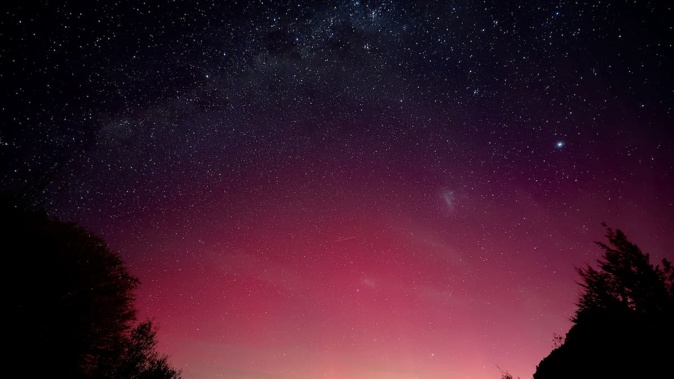
Aurora Australis could be visible in New Zealand this week, but it might be difficult to predict when and where, according to an expert.
Dr James Blundell, from the University of Otago’s physics department, said current computer modelling “is predicting the plasma from the sun to arrive around midday NZ time tomorrow.
“But the exact timing, strength and magnetic orientation of the event won’t be known until less than an hour or so before impact”.
This could mean that auroras are visible in the southern parts of NZ and Australia.
Dr Blundell said these events were difficult to predict in terms of their exact timing and the potential for visible auroras.
“But if the skies are clear, it would be worthwhile looking out to the south tomorrow evening I think.”
However, rain and cloud cover is predicted for some of the west coast of the South Island this evening and heading into tomorrow which would make the aurora difficult to see.
What is the Aurora Australis?
Auroras usually happen when the magnetosphere is disrupted by solar wind that alters charged particle trajectories.
The particles rise into the upper atmosphere and create vibrant colours in the sky such as green, pink, purple and red.
The Northern Lights, or Aurora Borealis, is the most famous aurora and can occur anywhere within a 2500km radius of the North Pole, making Norway and Iceland some of the best places to see it.
Aurora Australis sightings can happen year-round but are most common during the equinoxes in March and September as long, dark nights increase the odds of seeing the light.
Some of the best locations to see the Aurora Australis include Great Barrier Island, Wairarapa Dark Sky Reserve, Wai-iti International Dark Sky Park, or on a flight across the South Island.
Take your Radio, Podcasts and Music with you









